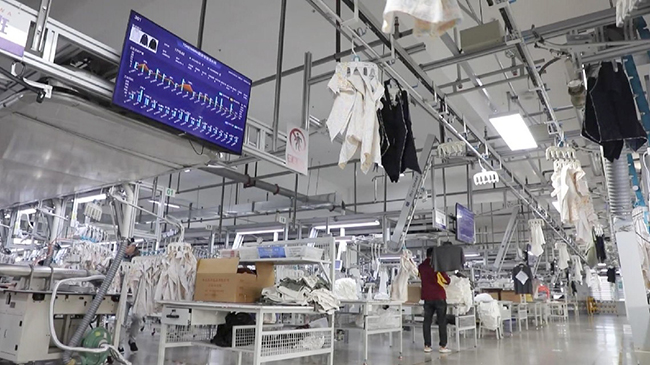当前位置 : International Daily News
 发布日期:2024/1/7
发布日期:2024/1/7
 来源:International daily
来源:International daily
 打印
打印

QINGDAO -- Clothing manufacturers in Qingdao City, a major clothing production base in east China's Shandong Province, have realized flexible production based on consumer needs, which improves the dynamic perception of the manufacturing industry and effectively reduces the risk of product upgrades.
According to Ruihua Group, a leading Chinese textile maker in Jimo District, the sales of many large and medium-sized garment exporters have sharply dropped due to the challenging external environment and rising personalized requirements in recent years.
"The current market is personalized, with diversified requirements for styles, color combinations, and fabrics. The standardized products that we previously offered in large quantities are clearly uncompetitive," said Cao Yazhong, factory director of the group.
To boost the sales, the firm has already started to receive more small-lot and personal orders, and its recent orders include multiple sizes, with a maximum order quantity of 3,000 pieces and a minimum order quantity of 50 pieces.
Facing orders with varying specifications, many traditional clothing factories have established intelligent production lines to avoid inefficient procedures and high costs.
"Now, this kind of orders in small volume have accounted for 70 percent of all our orders, driving our annual output value to an estimated 200 million yuan (around 27.83 million U.S. dollars), a year-on-year increase of 20 percent," said Song Shujie, deputy general manager of Ruihua.
Meanwhile, spurred by government initiatives, numerous local businesses also joined the craze.
"Specific policies have been introduced to support the digitization and industrial internet transformation of enterprises. For companies undergoing transformation, the subsidy ratio for project investments reaches 25 percent, with a maximum subsidy of up to 3 million yuan (around 420,000 U.S. dollars) per project. Currently, the entire region has undergone the process of industrial digital transformation, leading to an average increase in production efficiency of more than 20 percent," said Huang Tao, deputy director of Jimo District Industry and Information Technology Bureau.
According to a survey by the China textile construction engineering consulting and supervision center, the output value of Jimo's textile and garment industry is expected to exceed 70 billion yuan (around 9.74 billion U.S. dollars) this year.









